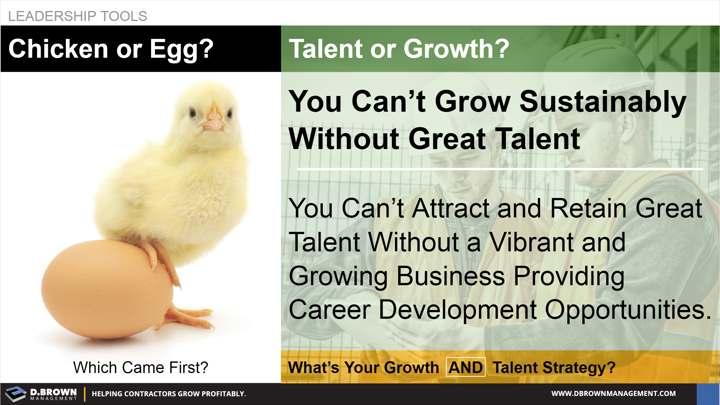This means a tough and scary strategic leap of faith for many contractors who are already suffering from labor shortages at the craft and management levels.
- Design your future state 2X org chart for where you need to be 5 years out. Look at it with the assumption that you will be able to find internal and external candidates to fill key roles as well as to build your field workforce if applicable.
- Identify those who will likely be leaving on their own or with some help in the next 1-3 years and 4-7 years. If you are a self-performing contractor include a percentage of your field workforce that you know will or needs to be turned over.
- Review your internal team for accelerated development opportunities to fill larger roles on the organizational structure while providing them the scaffolding of training, coaching and mentoring from both inside and outside the company.
- Clearly identify your talent gaps that need to be filled roughly by year - both recruiting and training requirements.
- Invest more aggressively than you ever have before in building your capabilities around the 9 Talent Processes. You will close those gaps if you develop a plan and execute relentlessly towards your goal.

